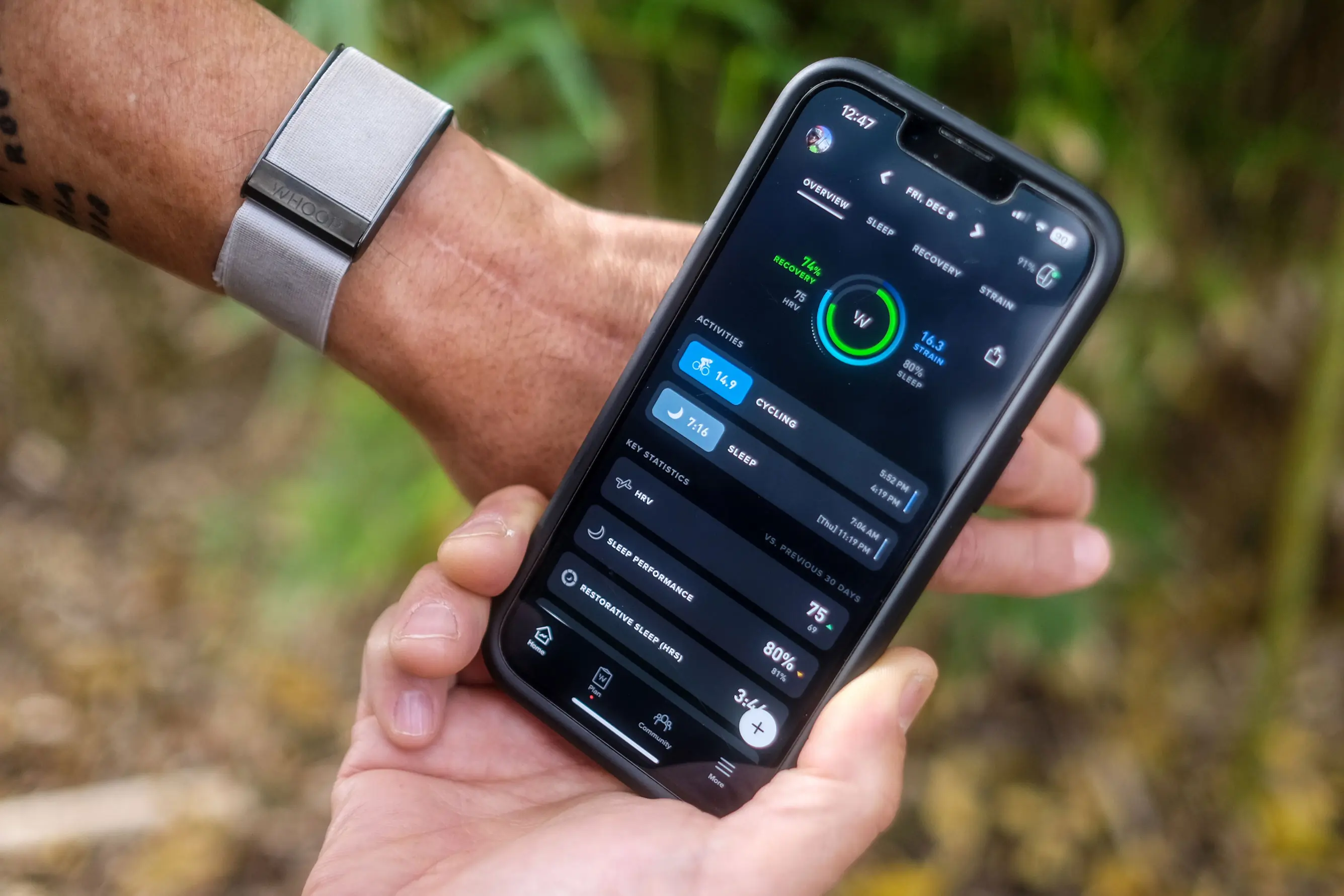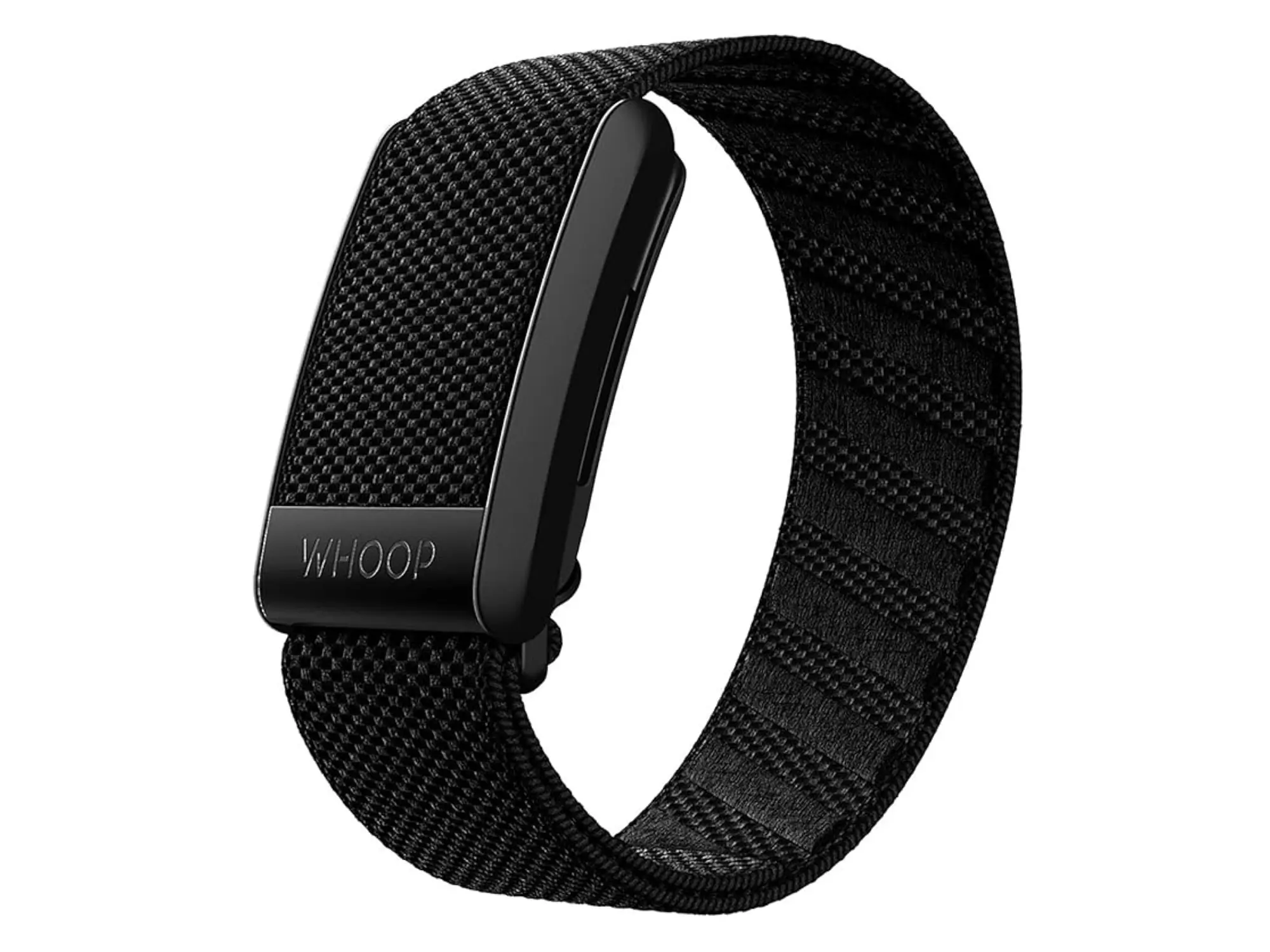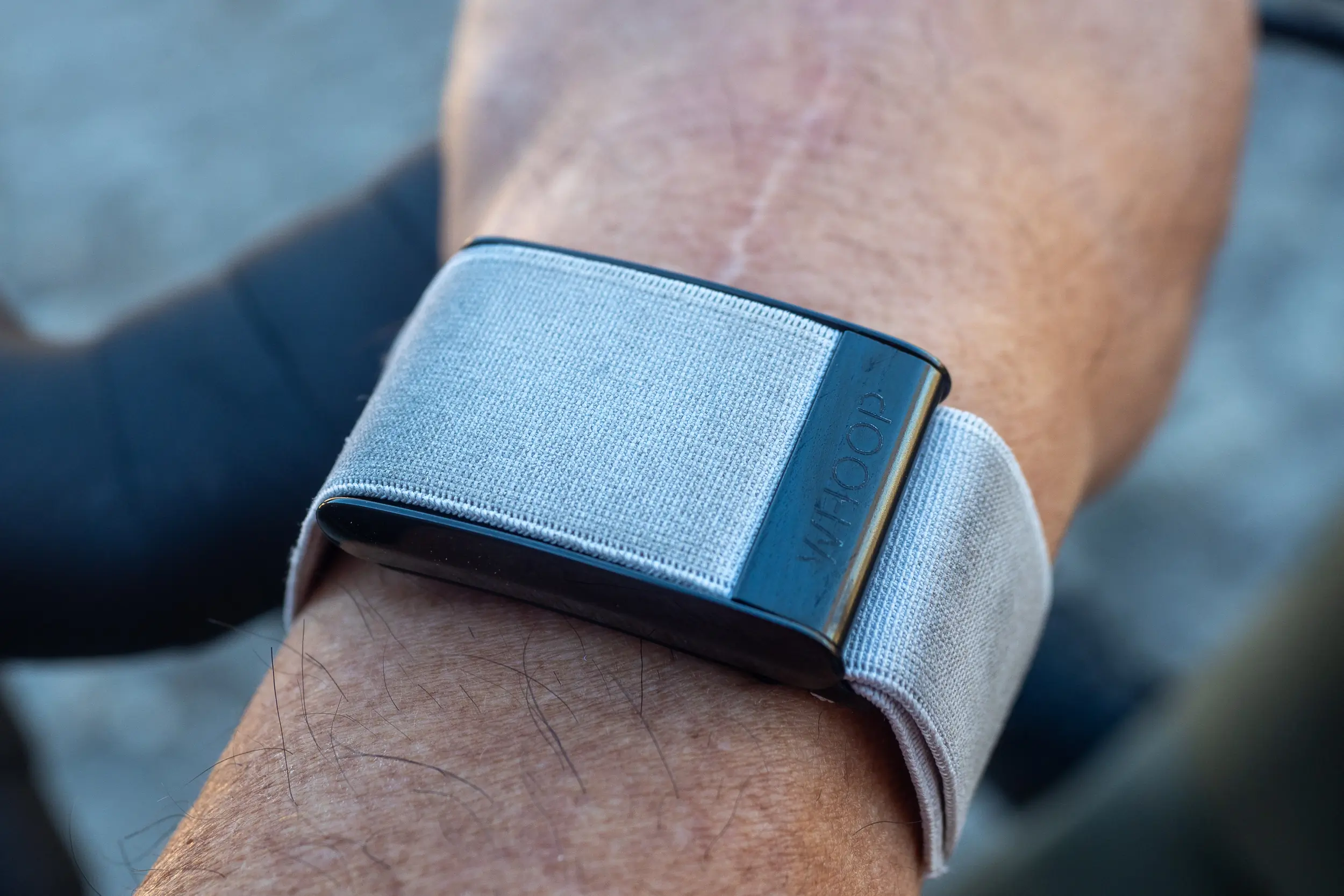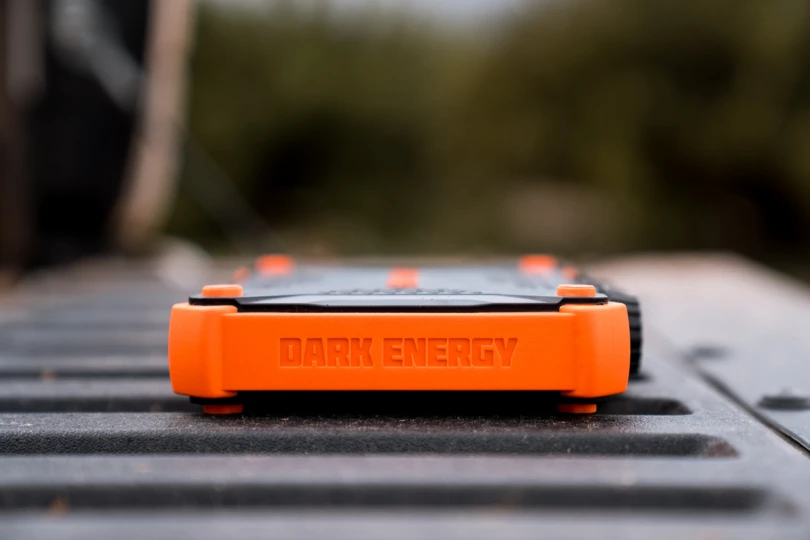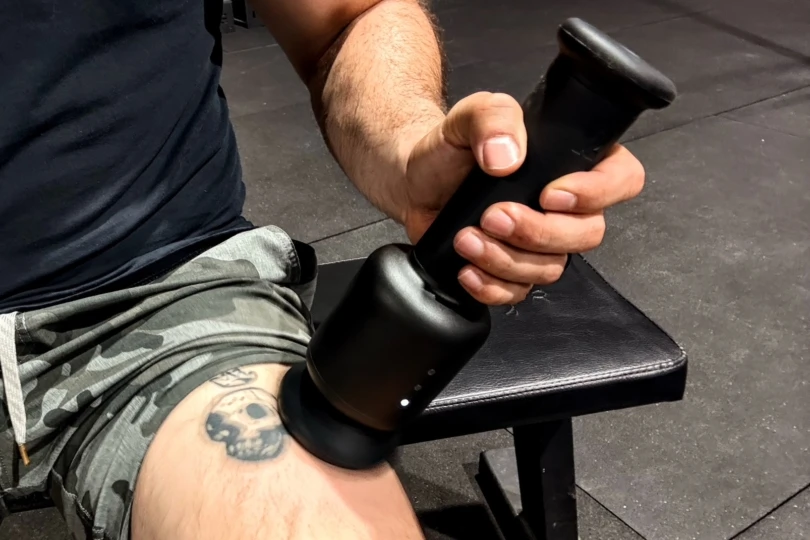I’ve been wearing the Whoop 4.0 for over a year, the unobtrusive wrist strap never leaving my arm. As a personal trainer of almost 30 years and somewhat of a “bio-hacking” fan, the promise of quantified recovery was appealing. I’ve found most self-monitoring products useful initially, but gaining new knowledge ceases since I follow the same routines, eat the same foods, etc. I wanted to know if the Whoop 4.0 was any different.
Whoop’s primary function is to quantify recovery efforts, mainly sleep, and balance them with strain. Through monitoring no less than six physiological markers during sleep and aligning them with personal logs and patterns of strain, an active person can dial in how actions, foods, and other things affect their sleep — and how that sleep affects training efforts.
In short: The Whoop 4.0 provided incredibly insightful evidence of things that affected my sleep, recovery, and ability to perform — both negatively and positively. Initially, these effects were substantial, and lifestyle changes dramatically improved recovery. A year in, although the frequency has dropped, I still discover seemingly minor actions that affect my day-to-day recovery.
-
Activity Tracking and Accuracy
7.0
-
Battery Life
6.0
-
Training Data and Planning
7.0
-
Build Quality
8.0
- Battery Life: Up to 5 days
- Weight: 28 g
- Case Size: 1.7" x 1.1",
- Display Size: N/A
- Bezel Material: Stainless steel
- Water Resistance Rating: IP68
Pros
- Super low profile on wrist
- Provides recovery data
- Excellent sleep monitoring
- Easy to use phone app
Cons
- Underestimation of strength-related activities
- Monthly or annual subscription is required
- Not a full-fledged fitness watch
Whoop 4.0 Review: Long-Term Test
I committed to using the Whoop 4.0 for at least a year to get as much usable information as possible and to test for durability. I have stressed to my athletes that recovery is exactly half of training, and it’s the half you cannot overlook. You can have all the motivation in the world to train, but if you don’t recover, the efforts largely go to waste. Like many of my athletes, I have zero problems being motivated to train. However, I have consistently had issues maintaining recovery efforts.
Being the fortunate cycling and climbing editor of GearJunkie, my work days alone involve plenty of activity. As a serious recreational athlete, recovery and athletic performance are priorities.
Also as a 55-year-old, recovery is essential to staying healthy and uninjured for consistent training. But being a single dad, maintaining social connections, and (of all horrors) dating have all made achieving a sustainable balance challenging.
I hoped that the Whoop 4.0 would help.
Physical Details
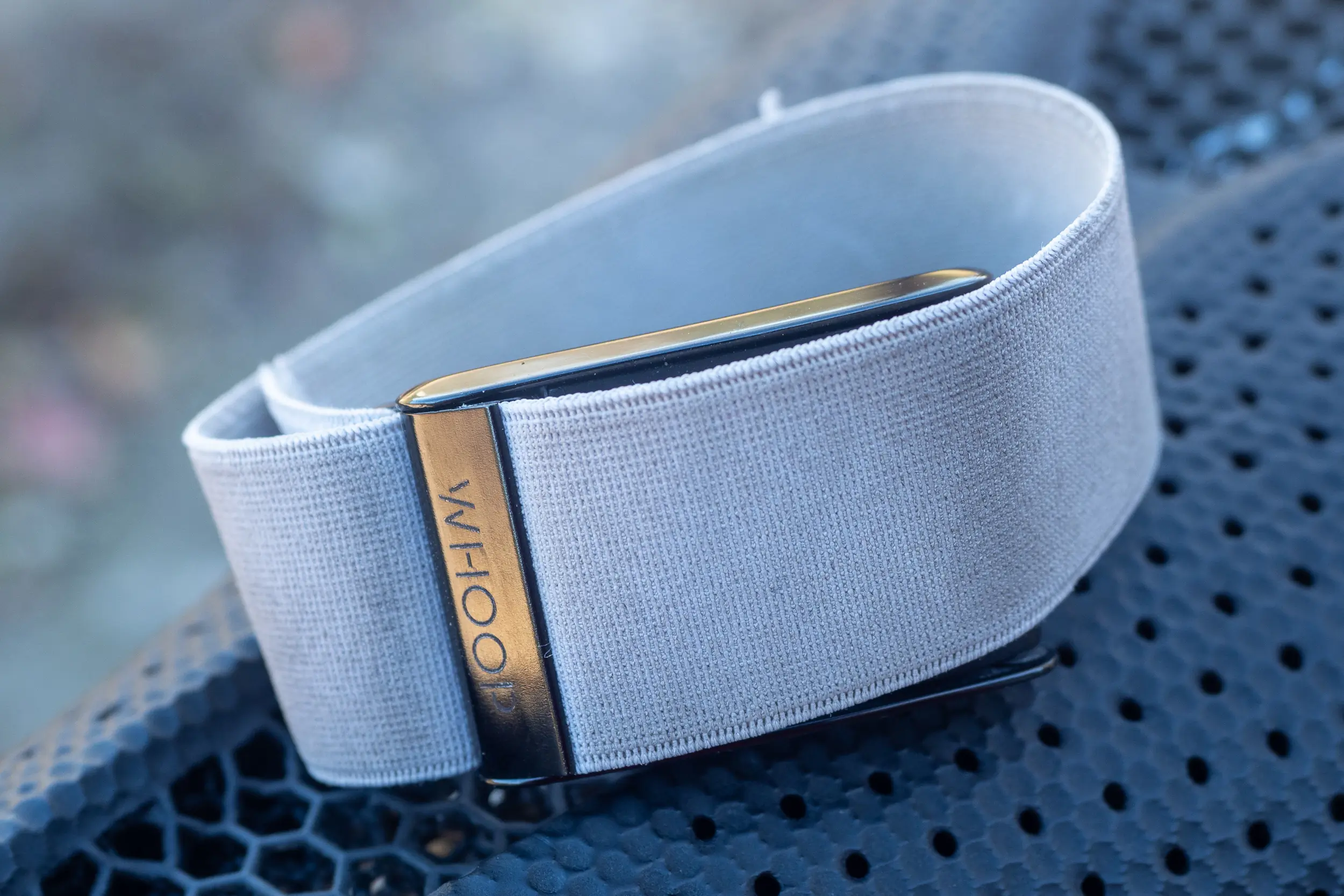
I wore the Whoop 4.0 tracker on my non-dominant wrist, per Whoop’s suggestion. It can also be worn on the upper arm. I found the 1.5 x 1-inch sensor unobtrusive, and it never interfered with any activity, including rock climbing.
The only time I registered that I had a tracking device on my wrist was when the strap was wet after exercising or showering. So I upgraded to a quicker-drying “Hydra-Knit” band. In this configuration, the Whoop 4.0 weighs a scant 28 g.
The on-board battery lasted about 4 days and was recharged wirelessly with a clever piggyback battery pack. This way, the Whoop can still record and send data to the phone while charging. I did this overnight so the much larger form factor with the charger on wouldn’t interfere with any activity.
The Whoop sensor and charging battery pack are IP68 dustproof and water-resistant at depths up to 10 m (roughly 32 feet) for up to 2 hours.
The Whoop 4.0: What It Tracks and Displays
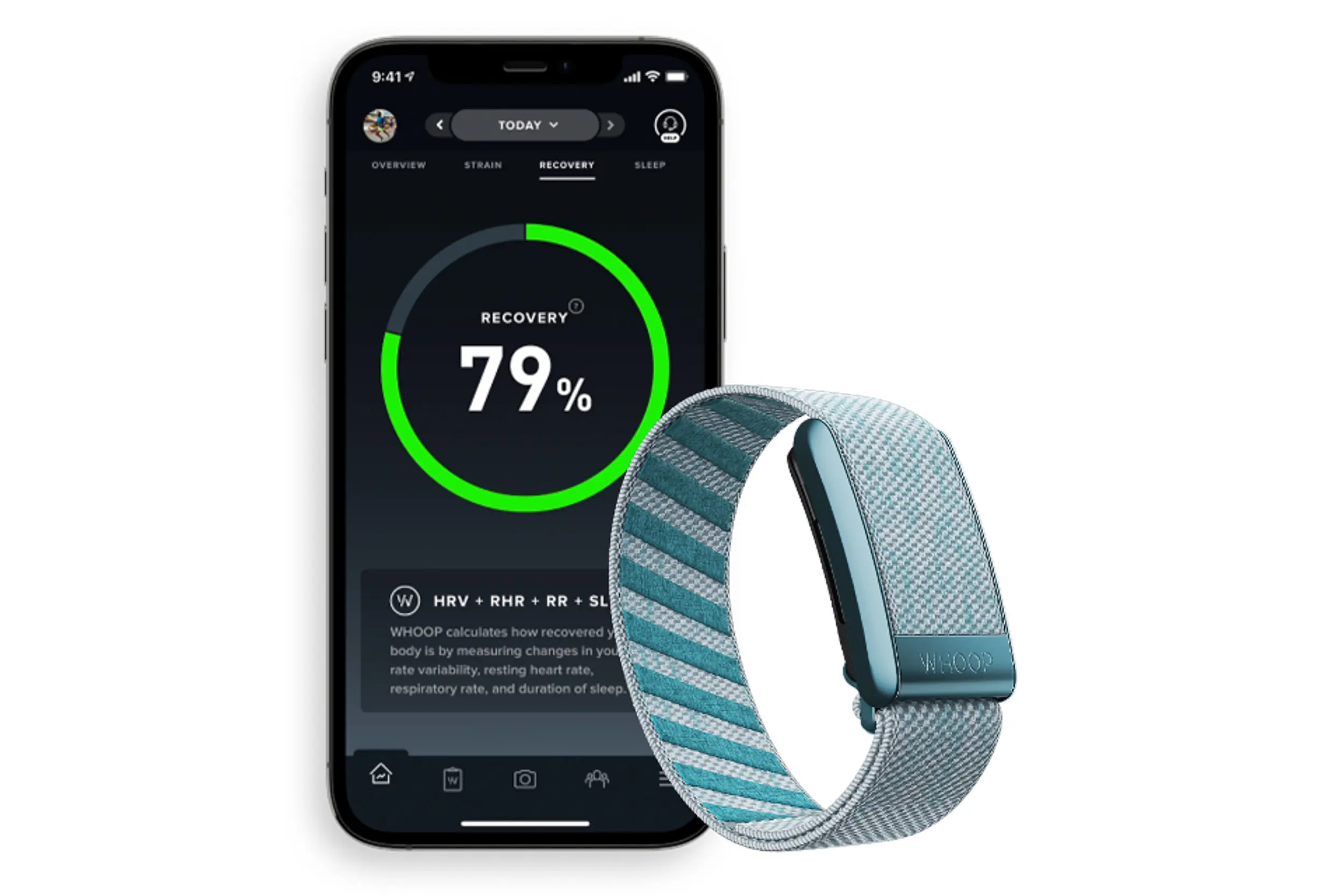



First off, primarily as a sleep monitor, the Whoop tracks time in each stage of sleep. Slow Wave Sleep (SWS), Rapid-Eye Movement Sleep (REM), light sleep, and time awake are all measured. It also monitors your waking events, skin temperature, respiratory rate, blood oxygen saturation, resting heart rate, and heart rate variability (HRV).
The Whoop also tracks the same metrics throughout the day in combination with GPS, motion sensors, and manual journal entries. These manual entries are customizable and include things like exercise type or zone, CBD use, caffeine and alcohol consumption, and other lifestyle variables that might affect sleep.
The app uses all the data to calculate a sleep need for targeting that night’s rest and recovery. It also estimates the amount of strain you can take that day. The main screen in the app continually shows a visualization of current strain versus recovery. Whoop also estimates stress levels throughout the day based on HRV and heart rate.
In a broad sense, the Whoop system attempts to quantify the amount of strain your current recovery can accommodate, as well as the amount and quality of sleep needed to recover from that day, and it tracks all this long-term to display trends.
The raw data is easily recalled so the user can connect the dots between actions, recovery, and ability to handle strain. The Whoop does provide other information, but this is the gist.
Recovery Tracking: Big Takeaways
Many of the significant factors that negatively affect sleep are common sense. Maybe the Whoop wasn’t required, but seeing the magnitude of the influence on sleep was initially a huge eye-opener. Everyone is different, so these statements are only true for me.
The big one that I think many active people want to know is how bad alcohol consumption affects sleep. For me, it was huge and definitely a bummer. Any amount of alcohol consumed after about 5 p.m. drastically influenced the quantity and quality of restorative sleep.
It docked both SWS and REM sleep quantity, and increased my time to fall asleep. It also raised my breathing rate, resting heart rate, skin temperature, and increased waking moments. Trust me, I tried every permutation; kind of alcohol, timing, with or without food, but the result was always the same.
The next biggest thing was the timing of my last meal. Similar to alcohol, the later I ate, the longer it took me to fall asleep, and it lowered the amount of restorative sleep. The larger the meal, the bigger the effect.
Finally, it became clear that any disturbing mental thoughts near bedtime clearly disrupted restorative sleep. Although it seemed like I fell asleep just as quickly, I had more frequent waking events and woke up for good much earlier. And like any other physical determinant, these emotionally troubling thoughts reduced both SWS and REM sleep.
Whoop 4.0 Review: Overall Impressions
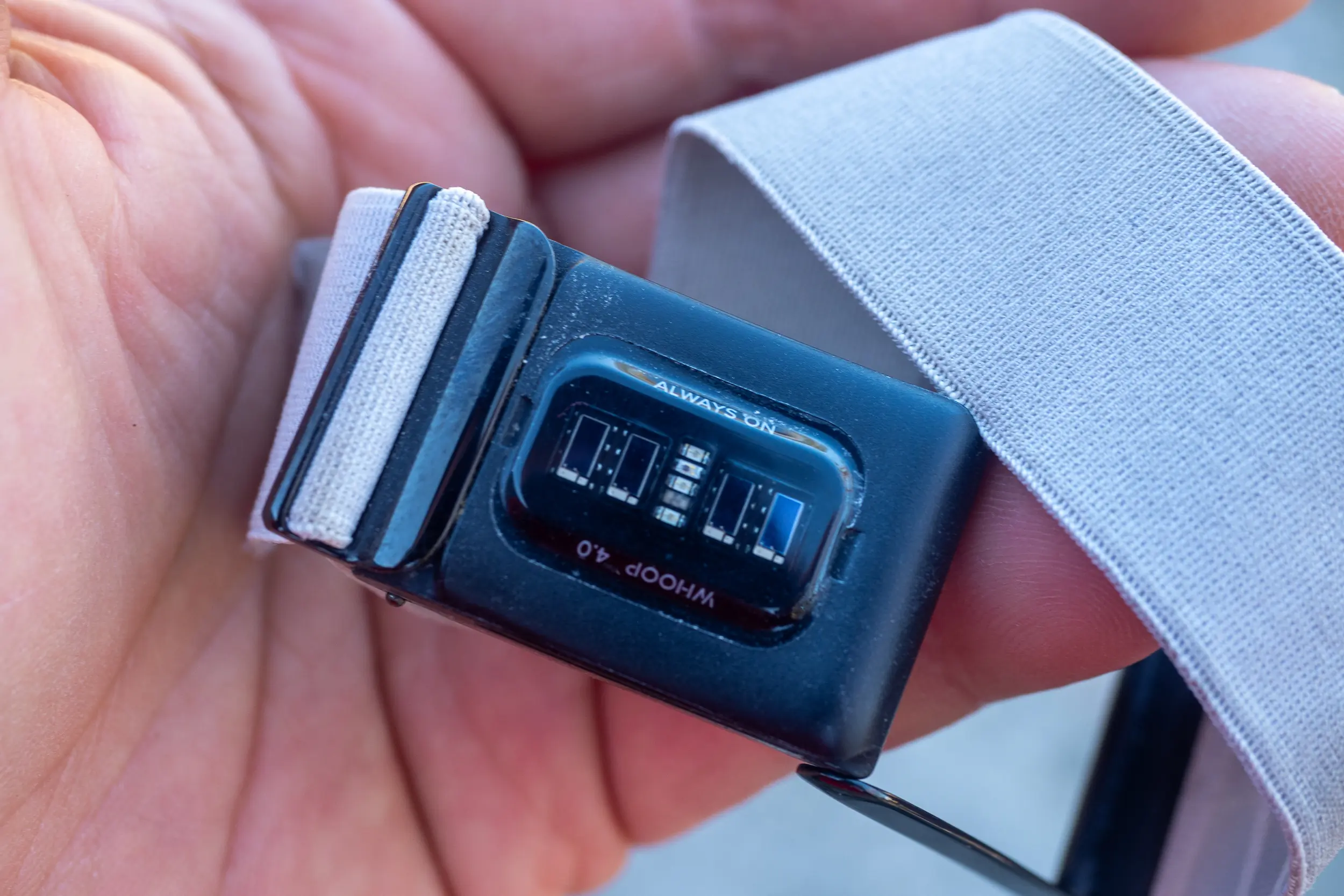



Diminishing Returns?
I am no stranger to self-monitoring for performance and health improvements. Every other wearable has proven helpful for a few months, but since my lifestyle stays consistent, the novelty and usefulness wore off. I quickly made appropriate lifestyle adjustments and confirmed the improvements. But continued improvements moving forward were extremely marginal at best.
I assumed the Whoop 4.0 would be the same, and it was true for the first 3 months. But I kept wearing the monitor and checking the app for the remainder of the year. Daily discoveries were no longer on tap. But occasional “ah-ha” moments allowed continued improvements in sleep, recovery, and ability to absorb strain.
Continued Findings
An example of a “minor” finding was certain bed partners caused a drastically increased skin temperature, regardless of air temperature. This higher skin temperature was in tandem with a higher resting heart rate and breathing rate. All this negatively impacted the effective recovery of my sleep.
This only occurred when I shared a bed with certain people. It was entertaining trying to figure out what made certain bed, tent, or van mates “hotter” than others. I will say my dog or cat had no effect, which may doom my current dating situation.
How long the Whoop 4.0 and Whoop app continue to guide lifestyle to improve recovery is totally up to the user, in my opinion. I committed a year to find out, so I was actively looking for connections for the duration. And I believe others doing the same will continue to see value in the system.
After a year of constant, 24-hour-per-day use, the Whoop sensor doesn’t have a scratch on it. This is despite rock and ice climbing and mountain and dirt biking with it. The Hydra-Knit strap shows some fading and dirt, but overall, the Whoop 4.0 has proven extremely durable.
What’s Not So Good
Underestimation of Strength-Related Activities
I felt that Whoop 4.0 accurately calculated the relative strain of aerobic exercise and predicted sleep and recovery needs. I cycled, hiked, and did cardiovascular cross-training or unloaded metabolic conditioning and felt the information from the Whoop app was correct and helpful.
But for climbing, weight lifting, or loaded, CrossFit-type metabolic conditioning, I felt the Whoop 4.0 drastically underestimated the strain and related sleep and recovery needs. The margin of error was significant based on how I felt the day following this training.
To possibly correct this underestimation, Whoop introduced a Strength Trainer function during the testing period. This allowed me to use a pre-built Whoop workout or enter my own into the app. But it required data entry during the workout, and as a time-crunched professional and single parent, I never used it.
I understood that entering loads, sets, and reps would drastically improve the accuracy of estimating muscular load, but I wasn’t willing to lose workout time or flow. I resorted to working around the Whoop’s underestimation of the strain and recovery needed for strength-related activities.
If high-strain, strength-building workouts are a priority, consider the impact this would have on your overall goals and experience.
Other Negative Factors
Another potential downside is the cost of the required subscription. The MSRP for a yearly membership is $239, and month-to-month memberships are $30/month. Both are significant investments, but committed memberships benefit from free hardware upgrades. Whoop offers a 30-day free trial that converts to a 1-year plan unless the user cancels, but these use a preowned device.
The Whoop 4.0 never popped off my wrist on its own. But I accidentally opened it a few times, pulling long-sleeved tops off or stuffing my arm into tight places while working on bikes or cars.
A slight negative is that the way the strap connects to the body, it can completely unhitch itself on one side. This could cause it to fly off, and potentially get damaged, instead of dangling on the arm.
Conclusions
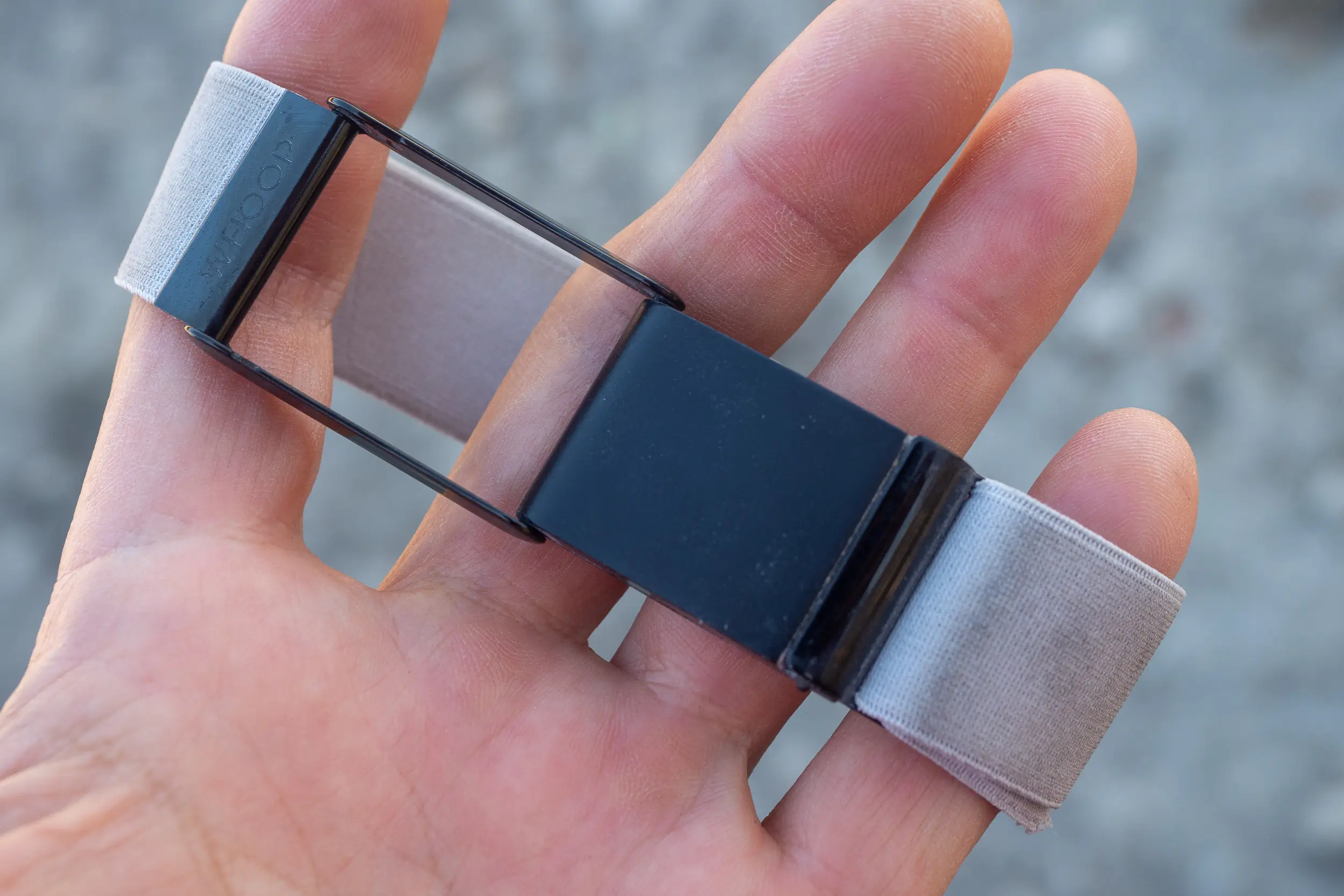



The impact on my lifestyle that the Whoop 4.0 had in the beginning is undeniable. It provided information that led me to changes that absolutely improved my sleep to better support my daytime activities. But I’ve had similar experiences with other wearables, like constant glucose monitors, other activity trackers, and other devices in the expanding self-monitoring market.
But after a year of continual use, I still glean bits of information that continue to massage my daily habits. No, they are not as frequent but still provide evidence to fuel gradual and continual progression. The line on the graph is initially steep with any input into wellness or training but it gradually tapers off.
As long as it continues upward, regardless of how slowly, for me, it’s still worth pursuing the slightest of improvements.
If you are similarly minded, I think you would find the Whoop 4.0 useful for at least the first year. I renewed my yearly subscription and am still motivated to chase down every little gain. And maybe you will be too.
